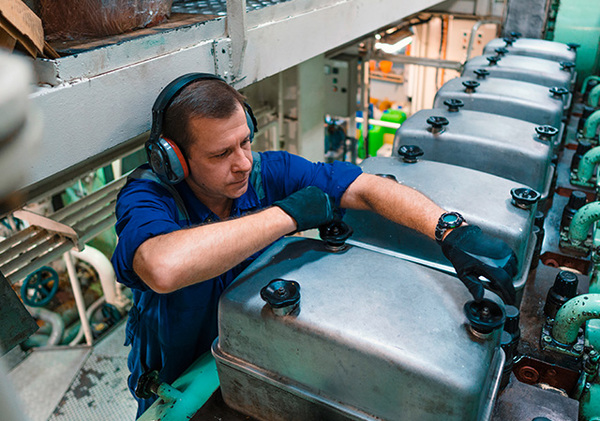High costs and IMO regulations hold back dual-fuel engine retrofits - DNV and MAN ES
There is an increased impetus for newbuilds to be fitted with alternatively fuelled engines, but the biggest challenge lies in reducing the greenhouse gas emissions of the existing shipping fleet, according to shipping classification society DNV and engine manufacturer MAN Energy Solutions (MAN ES).
 PHOTO: Retrofitting engines on vessels in operation is challenging since retrofits are costly and complex. DNV
PHOTO: Retrofitting engines on vessels in operation is challenging since retrofits are costly and complex. DNV
The existing fleet is made up of about 55,000 ships with two-stroke engines and 30,000 ships with four-stroke engines. It is possible to retrofit these to run on fuels with near zero-emission potential like green methanol or green ammonia, but as there is no regulatory or technical requirements to forge ahead with these retrofits now, it is unclear when shipowners will opt for them, if at all. And even if they find good arguments for doing so, there are economic and regulatory barriers to consider, DNV and MAN ES say.
“Less than 10% of the existing global merchant fleet are regarded as theoretic candidates for retrofitting. We don’t see this happening today due to costs and uncertainties but think that this could be achieved over the next five to ten years, particularly after 2030 when regulations really start biting,” business development manager at DNV Christos Chryssakis says.
In its assessment, DNV says large ships are most suitable for retrofits, which have gained some popularity as a pathway for shipowners to meet impending and upcoming decarbonisation targets. However, several challenges remain for large-scale retrofits, including the need to keep costs below 25% of a ship's total newbuild price tag.
“The cost of retrofitting, including the fuel storage and fuel supply system, ranges between USD 5 million and USD 15 million depending on the type of fuel and, as a rule of thumb, this should not exceed 25% of the newbuild cost of a ship to be economically viable,” Chryssakis says.
IMO regulations have also stood in the way of large-scale dual-fuel retrofits, and only a limited number of shipyards are expected to be able to carry out the complicated process, DNV says.
A key concern is the IMO requirement of parent engine tests for dual-fuel retrofits, stipulating that parent engines have to have “features and characteristics which, from experience, are known to produce the highest NOx emissions”. But as methanol and ammonia are new marine fuels, there are not yet single-fuel or dual-fuel parent engines of all bore sizes and specifications that can run on them.
So if a shipowner then wants to retrofit a ship with a dual-fuel methanol or ammonia engine, its scope to go ahead with that retrofit might be limited because parent versions of the dual-fuel methanol or ammonia engines do not yet exist.
This barrier to retrofits is also compounded at the other end of the spectrum. Ships with older heavy fuel oil engines that have gone out of production do not necessarily have parent engines ready for testing anymore, according to Chryssakis.
“Unless this regulation is amended, or new guidelines are developed, the pace of retrofitting will be significantly hindered,” he says.
By Debarati Bhattacharjee
Please get in touch with comments or additional info to news@engine.online





